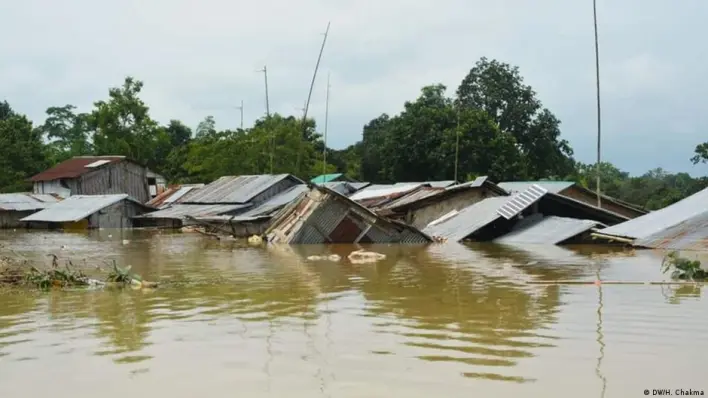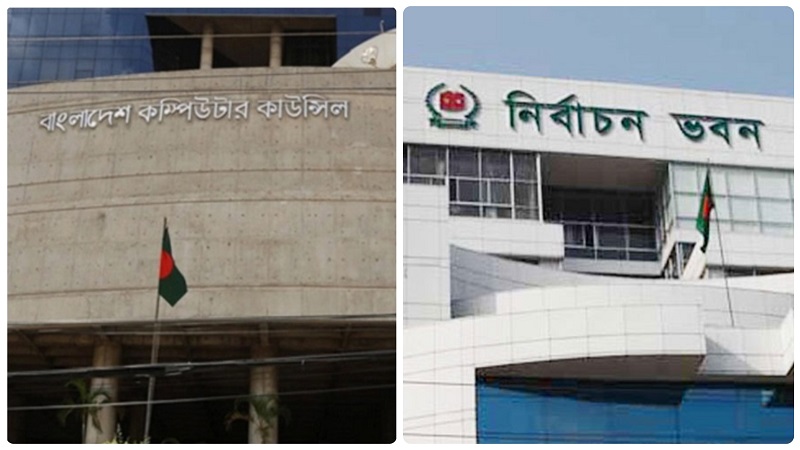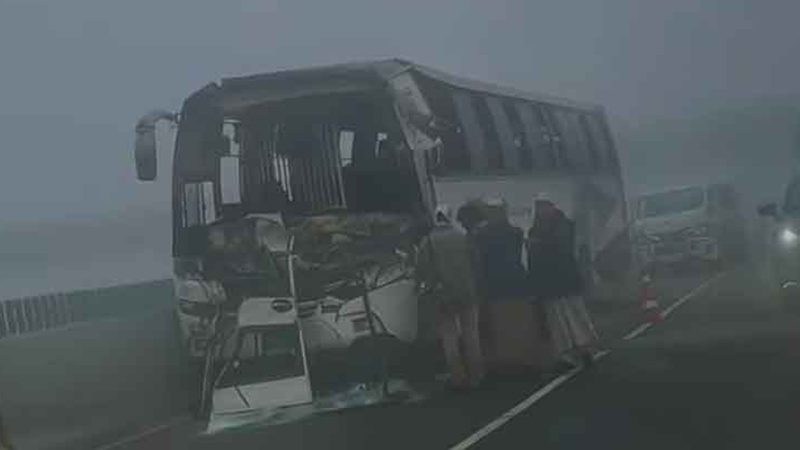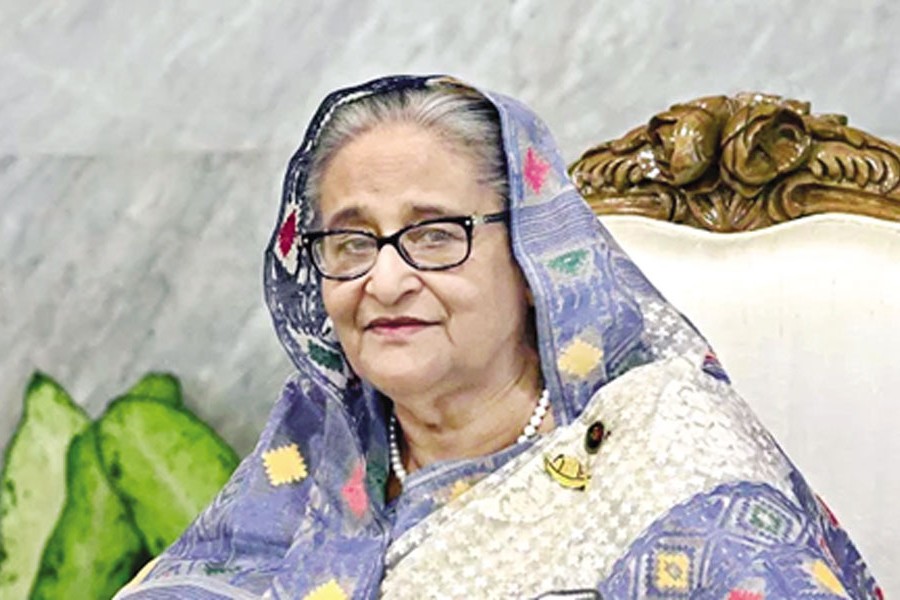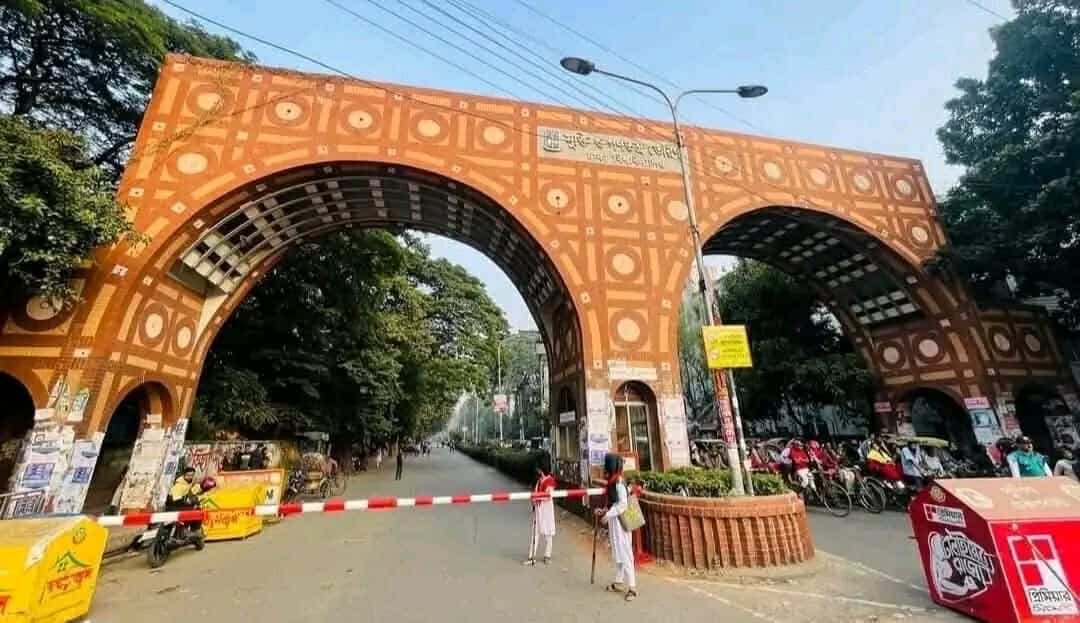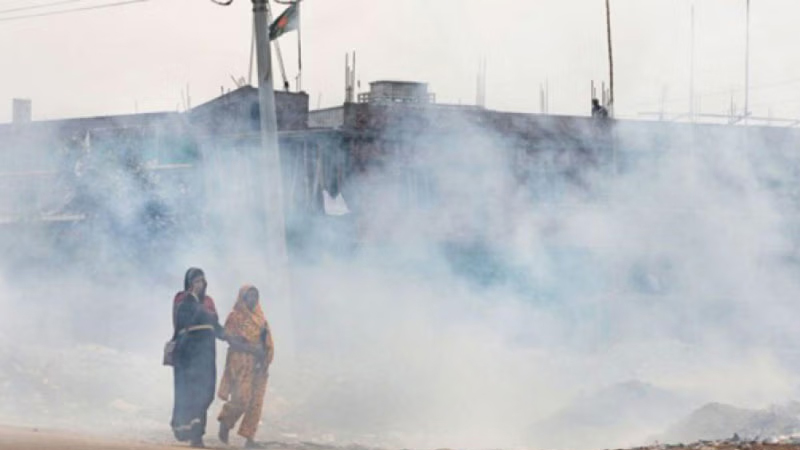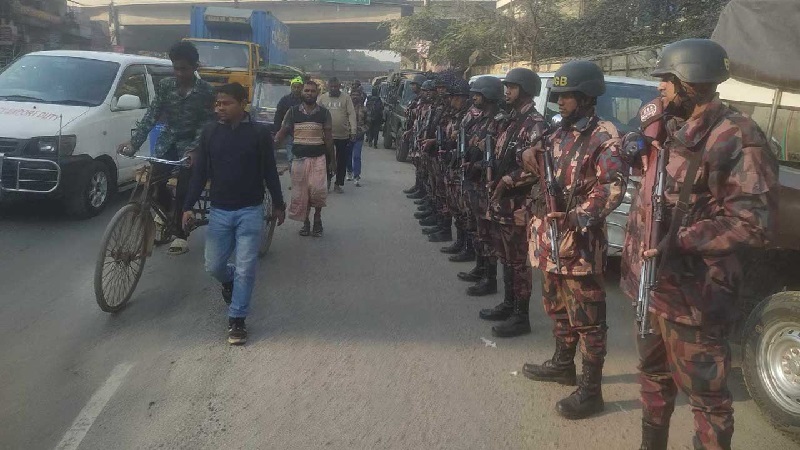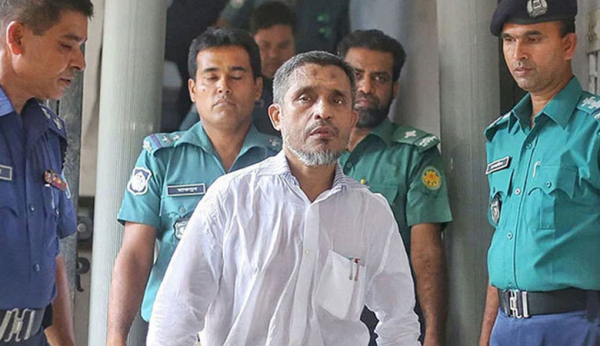The suffering of the flood victims in Sylhet and Sunamganj districts has worsened, with more areas submerged and power supplies cut off, officials said on Saturday.
The devastating floods have effectively stranded four million people in these two districts, with children and the elderly being the most vulnerable.
The severe shortage of food and safe drinking water is forcing the victims to flee their homes and seek refuge in shelters and high grounds, which is once again hampered by a boat crisis.
In some areas the boat fare has multiplied by 100 times, in other places, there has been a reported shortage of vessels.
Many people were having problems cooking as the supply of LP gas cylinders was also cut off.
The flooding, described by experts as potentially the country’s worst since 2004, was exacerbated by the runoff from heavy rain across the Indian mountains.
More rain has been forecast for the next two days.
With water levels in all major rivers across the country rising, the flooding is likely to worsen in Lalmonirhat, Kurigram, Nilphamari, and Rangpur districts in northern Bangladesh.
Blackout
As floodwater entered the Kumargaon 132/33 KV grid substation in Sylhet on Saturday noon, the authorities suspended power supply to the two districts.
Efforts are underway to quickly pump out the water from the facility to restore the power supply to the flood-affected areas.
Due to the two-day power outage, Sunamganj’s mobile network system has also gone offline.
The power outage has exacerbated the candle and kerosene shortages, with prices for these necessities rising in many areas.
Medical services at MAG Osmani Medical College Hospital in Sylhet have been disrupted due to the power cut after flood water entered the hospital premises.
The hospital’s surgery department and intensive care unit (ICU) services are being hampered because of the power outage.
The process of installing a generator on an emergency basis is going on to continue providing medical services to patients.
Meanwhile, the rail link between Sylhet and the rest of the country has been cut off due to the inundation of the railway station by flood water. Train services from Sylhet to Dhaka and Chattogram have been cancelled and the routes have been changed until further notice.
Situation alarming
The unprecedented flood inundated 80 per cent of the area of Sylhet division and 90 per cent of Sunamganj, according to the Flood Forecast and Warning Centre (FFWC).
FFWC Executive Engineer Arifuzzaman Bhuiya, said this is the first time that 80 per cent of Sylhet division went under water and the flood situation may worsen further as the meteorologists predict heavy showers in the next two days.
“Much of the country’s northeast is underwater and the situation is getting worse as heavy downpour continues,” Mosharraf Hossain, divisional commissioner of Sylhet, told Reuters.
The worst-hit Sunamganj district is almost cut off from the rest of the country, he said, adding that the army was helping the authorities to rescue those trapped and distribute relief.
“There is a shortage of boats, which makes it harder to move people to safer places,” he said.
Roads and railway lines have been submerged, with people wading through chest-high brown churning waters, carrying their belongings and livestock.
Schools have been turned into relief shelters to house entire villages inundated in a matter of hours by rivers that suddenly burst their banks.
“The whole village went underwater by early Friday and we all got stranded,” said Lokman, whose family lives in Companiganj village.
“After waiting a whole day on the roof of our home, a neighbour rescued us with a makeshift boat. My mother said she has never seen such floods in her entire life,” the 23-year-old added.
Asma Akter, another woman rescued from the rising waters, said her family had not been able to eat for two days.
“The water rose so quickly we couldn’t bring any of our things,” she said. “And how can you cook anything when everything is underwater?”
Floods spreading
Meanwhile, the low-lying areas of Habiganj, Moulvibazar, Netrokona, Sherpur, Jamalpur, Kishoreganj, Rangpur, Nilphamari, and Kurigram districts have been flooded as major rivers keep rising.
In Kurigram, the flood situation district worsened further due to the swelling of major rivers caused by the onrush of water from upstream and incessant rainfall, rendering one lakh people marooned.
The low-lying areas and char areas of Kurigram Sadar, Ulipur, Phulbari, Nagershwari, Bhurungamari and Chilmari upazilas went underwater while nearly 100 educational institutions have been closed due to flood.
River erosion at 30 points in the district has taken a serious turn, and 20 educational institutions and many houses are facing erosion threats.
According to the Department of Agriculture Extension, 6,000 hectares of land have been inundated and 150 fish enclosures were washed away by the flood.
Besides, many roads were submerged in nine upazilas of the district, snapping road communication.
Many people have taken shelter in high places including roads and embankments as flood water enters their dwelling houses.
Thousands of people in flood-hit areas are suffering from a shortage of food and drinking water for the last couple of days.
In Netrakona, a rail bridge in Mohanganj upazila collapsed in the floodwater, suspending communication with the rest of the country.
Nearly 40 unions under six upazilas in the district have been inundated, Netrokona Deputy Commissioner (DC) Anjana Khan Majlish told the media, adding that a total of 1,088 shelters have been opened in the area.
Meanwhile, in Brahmanbaria, floods triggered by incessant rain and an onrush of water from upstream hills have collapsed a flood embankment in Akhaura upazila.
As a result, the area has been disconnected from the rest of the country.
Casualties
At least 21 people have been killed by lightning triggered by the storms since Friday afternoon, police officials told AFP.
Another four people died when landslides hit their hillside homes in the port city of Chittagong, police inspector Nurul Islam told AFP.
Food, cash aid on its way
The government has allocated Tk 2.25 crore for cash and food relief in 11 districts of the country, namely Sylhet, Sunamganj, Habiganj, Moulvibazar, Netrokona, Sherpur, Jamalpur, Kishoreganj, Rangpur, Nilphamari, and Kurigram.
Besides, 400 tonnes of rice and 41,000 packets of dried and other food items have been allocated on behalf of the deputy commissioners concerned.
Meanwhile, the non-governmental organisation BRAC has been working alongside local government since the beginning of the recent flood situation in the country.
The organisation has allocated Tk3 crore from its own funds for emergency flood relief.
The money will be used to provide dry food, safe drinking water, oral saline, matches, candles, essential medicines and other services to people affected by flood. The money will also be used to rescue people trapped in the flood. Initially, the relief will provide support to around 52,000 families.
The situation to worsen
Forecasters said the floods were set to worsen over the next two days with heavy rains in Bangladesh and upstream in India’s northeast.
According to the local weather office, the water level of many rivers will rise in the next two days due to the onrush of water from upstream.
According to the Water Development Boards, many rivers have been flowing above the danger levels at many points.
The Surma water was flowing 128 cm above its danger mark at Kanaighat point, 77 cm up at Sylhet point, and 120 cm above at Sunamganj point at 6am on Saturday, while the Sari River was flowing 67 cm above its red mark at the same time.
The water level of the Kurishara River has also increased, and the Jadukata River in the Sunamganj district is also flowing above its danger point.
Before this week’s rains, the Sylhet region was still recovering from its worst floods in nearly two decades late last month, when at least 10 people were killed and four million others were affected.
Last month, a pre-monsoon flash flood, triggered by a rush of water from upstream in India’s north-eastern states, hit Bangladesh’s northern and north-eastern regions, destroying crops and damaging homes and roads. The country was just starting to recover when fresh rains flooded the same areas again this week.
Bangladesh, a nation of 160 million people, is low-lying and faces threats from natural disasters such as floods and cyclones, made worse by climate change. According to the UN’s Intergovernmental Panel on Climate Change, about 17 per cent of people in Bangladesh would need to be relocated over the next decade or so if global warming persists at the present rate.


